Dryer lint piles up in our dryers and our landfills. But you can reduce, reuse and recycle it with these clever tricks.
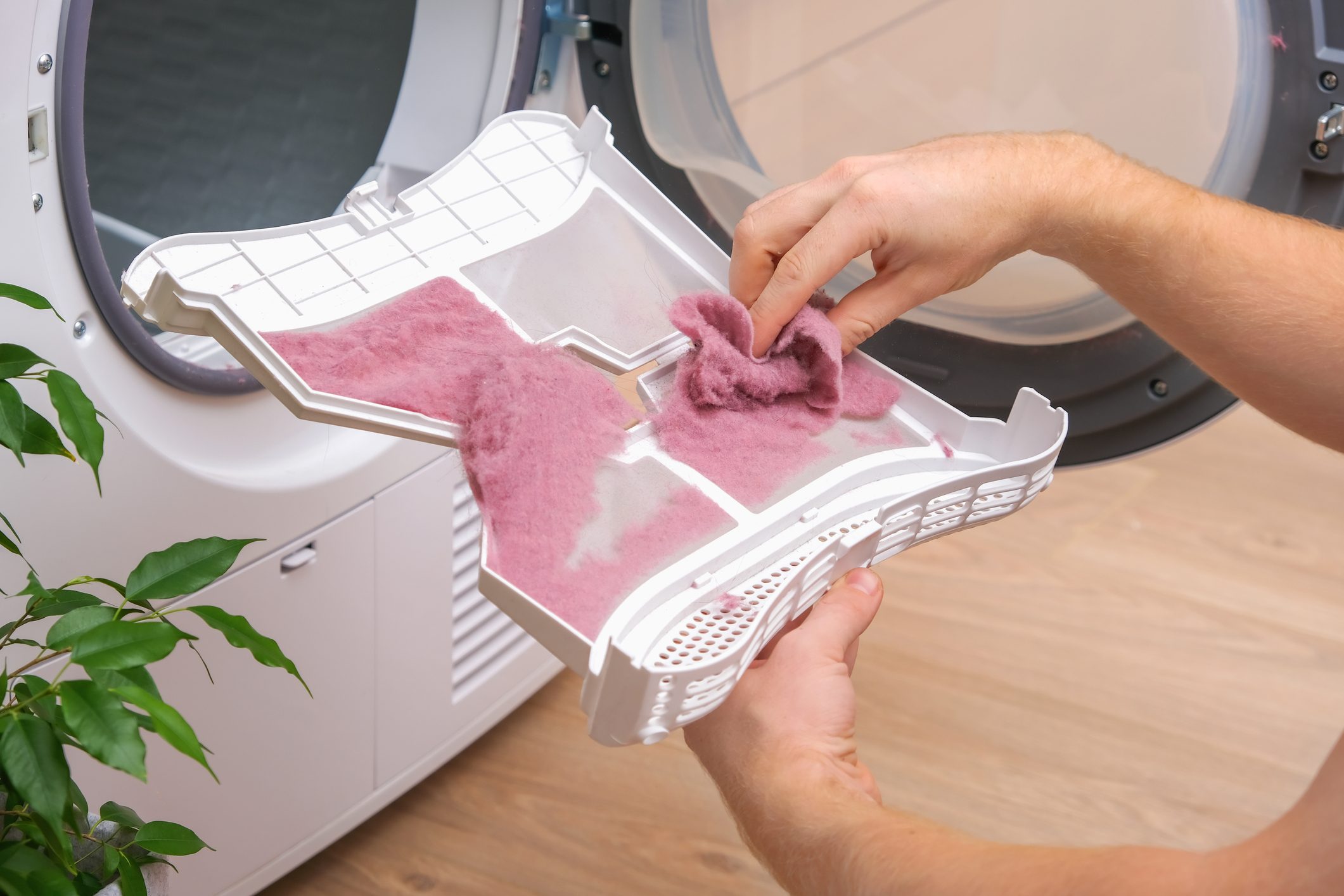
8 Genius Dryer Lint Uses You Never Thought Of


1. Quick fire starter
Soggy camping trip? Dryer-lint fire starters to the rescue! “Simply fill empty toilet-paper rolls with dryer lint and wrap them in wax paper to seal the ends,” says Busch. “The wax paper acts as a perfect wick for lighting.” This dryer lint use works because the lint is packed with tiny fibers that are highly flammable, making it a pocket-sized bonfire that’s ready when you are.
Another popular method is to use paper egg cartons and candle wax. Fill the egg-crate segments with lint and pour melted wax over the top. Once hardened, cut out the sections and put them in a plastic bag. One of these babies will burn for about 15 minutes, which I can tell you from personal experience is a genius dryer lint use.

2. Slime-like modeling clay
What do you get when you mix dryer lint, glue, warm water and dish soap? A gloppy mess that kids love to play with! “Wet dryer lint has a similar consistency to modeling dough,” Busch says. That means it makes a great upcycled alternative to expensive crafting clay. It’s perfect for molding shapes, and once it dries, kids can paint or otherwise decorate their creations.
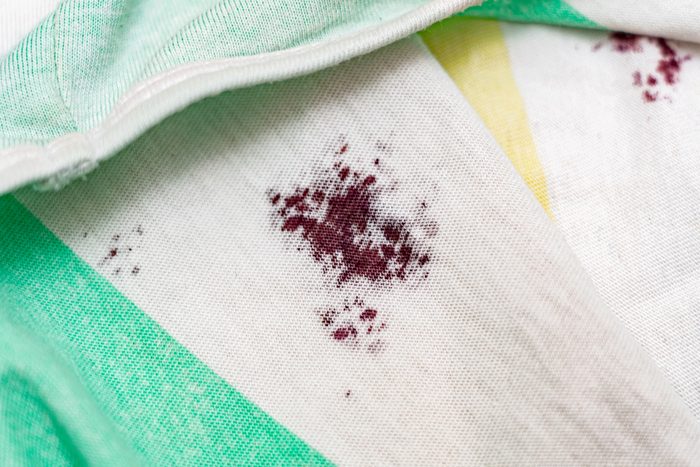
3. Spill absorber
Your shirt absorbs the coffee and spaghetti sauce you spill on it, right? Dryer lint does the same—thanks to its fibrous makeup. Keep a bag of dryer lint in your garage or workshop, and use it the next time you knock over a can of oil or bottle of glue. Dryer lint’s already trash, so you can just toss it when done instead of having to throw away perfectly good rags! (But if you already used one, we hope you know that oily rags top the list of things that shouldn’t end up in your dryer.) For stubborn oil stains, Busch says to cover the affected area with the lint for 24 hours, then repeat for best results.
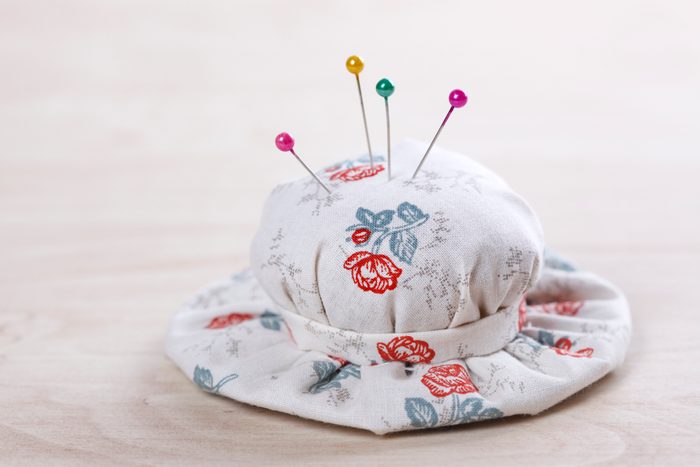
4. Sewing projects
Do you have a button box or sewing basket? If you’re still fumbling with paper packets or plastic containers for your needles and pins, a dryer-lint pincushion made with a single sock will organize your sewing chaos in no time. And, of course, that’s just one way to use dryer lint in an affordable DIY. “Rather than purchasing filling for sewing projects,” Busch says, “dryer lint can be collected and used as an alternative stuffing material.”
One important note: Use dryer lint only for projects that won’t be near flame, Busch says. Remember, it is highly flammable (so no kids’ toys!).
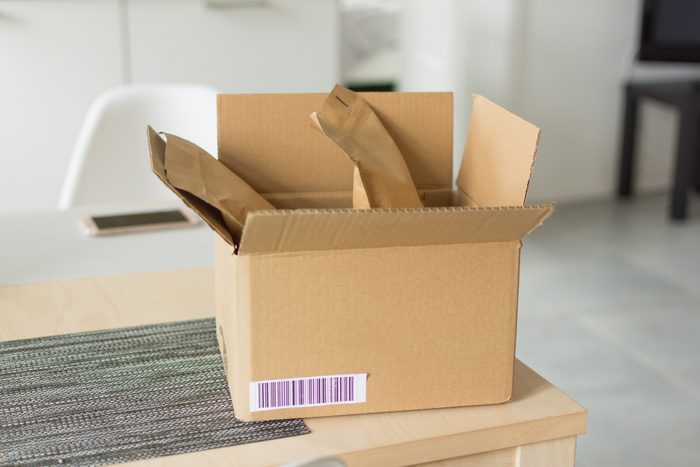
5. Packing material
Americans wash around 300 loads of laundry per household every year, and in 2021, they shipped 21.7 billion packages. Seems like a match made in heaven, right? Dryer lint is soft and plentiful, and can be reused to send valuables through the mail or parcel service. Press it into flat sheets to line packages or envelopes, or use it to surround tiny breakables before loading them into larger boxes. Sure, you can recycle packing material, but a better idea is to avoid buying it in the first place.

6. Paper crafts
Artistic types will love the versatility of dryer lint when making papier-mâché projects like kids’ crafts and holiday decorations. Bulk up the usual newspaper-and-flour paste with dryer lint to add texture, then apply the mixture to forms or shape as desired.
You can even make dryer-lint paper! Soak and put lint in a blender, then sieve and press the fibers using a mold and deckle, which are traditional paper-making tools.

7. Garage projects
Back out in the garage, use that same bag of dryer lint you have for cleaning up spills to apply oils and lubricants to tool handles, metalworking projects and car parts. A little tuft of dryer lint on the end of a wooden stick or awl is a great replacement for cotton swabs. This smart dryer lint use allows you to easily and affordably clean crevices, remove excess oil or perform detail work in painting, car repair and other mechanical projects.

8. Plant pot liner
Unless you exclusively wear cotton or wool garments, it’s likely your dryer lint contains non-biodegradable materials like nylon and polyester. For this reason, it’s not a great compost addition or soil amendment—especially if you use dryer sheets or fabric softeners, which tend to leave residues.
One way you can use it for your plants, however, is to line plant pots. Not only will it absorb and retain water for thirsty plants that prefer a denser medium, but it will also keep dirt from falling out of the hole. Busch cautions against using it around animals and other wildlife, especially birds. The issue? The lint contains detergent, fabric softener and synthetic materials, and these chemicals could be dangerous when ingested. Plus, when birds use it for nests, it soaks up water and then dries and crumbles, potentially harming the structure of the nest.
“Responsible disposal of dryer lint is essential for safety and environmental considerations,” Busch says. So for the safety of our animal friends and the earth, limit your dryer lint uses to indoor projects.
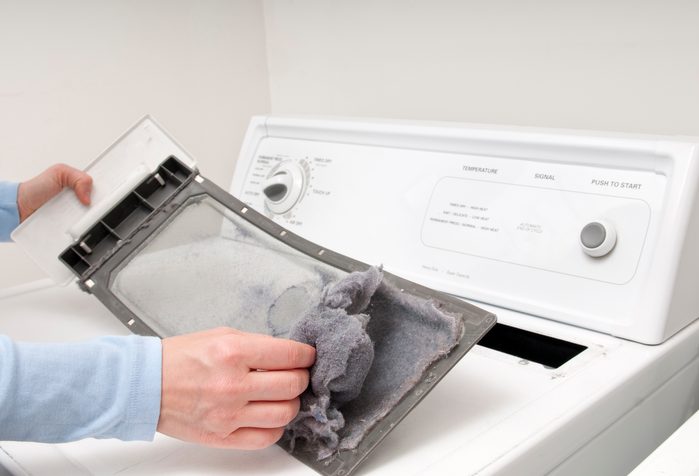
What happens if you don’t clean lint from your dryer?
Think about what dryer lint is, and you’ll understand why it’s a major fire hazard. “Dryer lint primarily consists of small fibers, fluff and particles that shed from our clothes and other laundry items during the drying process,” Busch says. “These fibers are generally made up of natural materials like cotton, wool and linen, as well as synthetic materials like polyester and nylon.” In other words: a big pile of kindling.
Not only that, “it can trap and carry other particles such as dust, pet hair and even microscopic pollutants that may be present in the air or on the laundry items being dried,” Busch says. Excess lint is often the culprit if your dryer isn’t drying because all this gunk blocks airflow, shortening the life of your dryer and potentially leading to a buildup of molds, bacteria and even carbon monoxide (for gas dryers).
So clean out that laundry dryer lint trap every time you dry your clothes, and don’t ignore the vent. “Leading appliance manufacturers recommend dryer vents be thoroughly cleaned at least once a year to mitigate the risk of fire and other potential hazards to both your health and property,” according to Busch.
About the expert
|
Why trust us
At Reader’s Digest, we’re committed to producing high-quality content by writers with expertise and experience in their field in consultation with relevant, qualified experts. We rely on reputable primary sources, including government and professional organizations and academic institutions as well as our writers’ personal experiences where appropriate. We verify all facts and data, back them with credible sourcing and revisit them over time to ensure they remain accurate and up to date. For this piece on extension cord safety, Ally Childress tapped her experience as a professional electrician and home-improvement writer. Read more about our team, our contributors and our editorial policies.
Sources:
- Energy Star: “Clothes Dryers”
- Energy Star: “Clothes Washers”
- FSU Museum of Fine Arts: “The Art of Craft: Handmade Paper (and How to Make it at Home)”
- National Fire Prevention Association: “Home fires involving clothes dryers and washing machines”
- Statista: “Parcel shipping volume in the United States from 2016 to 2021”
- Kevin Busch, president of Dryer Vent Wizard




















